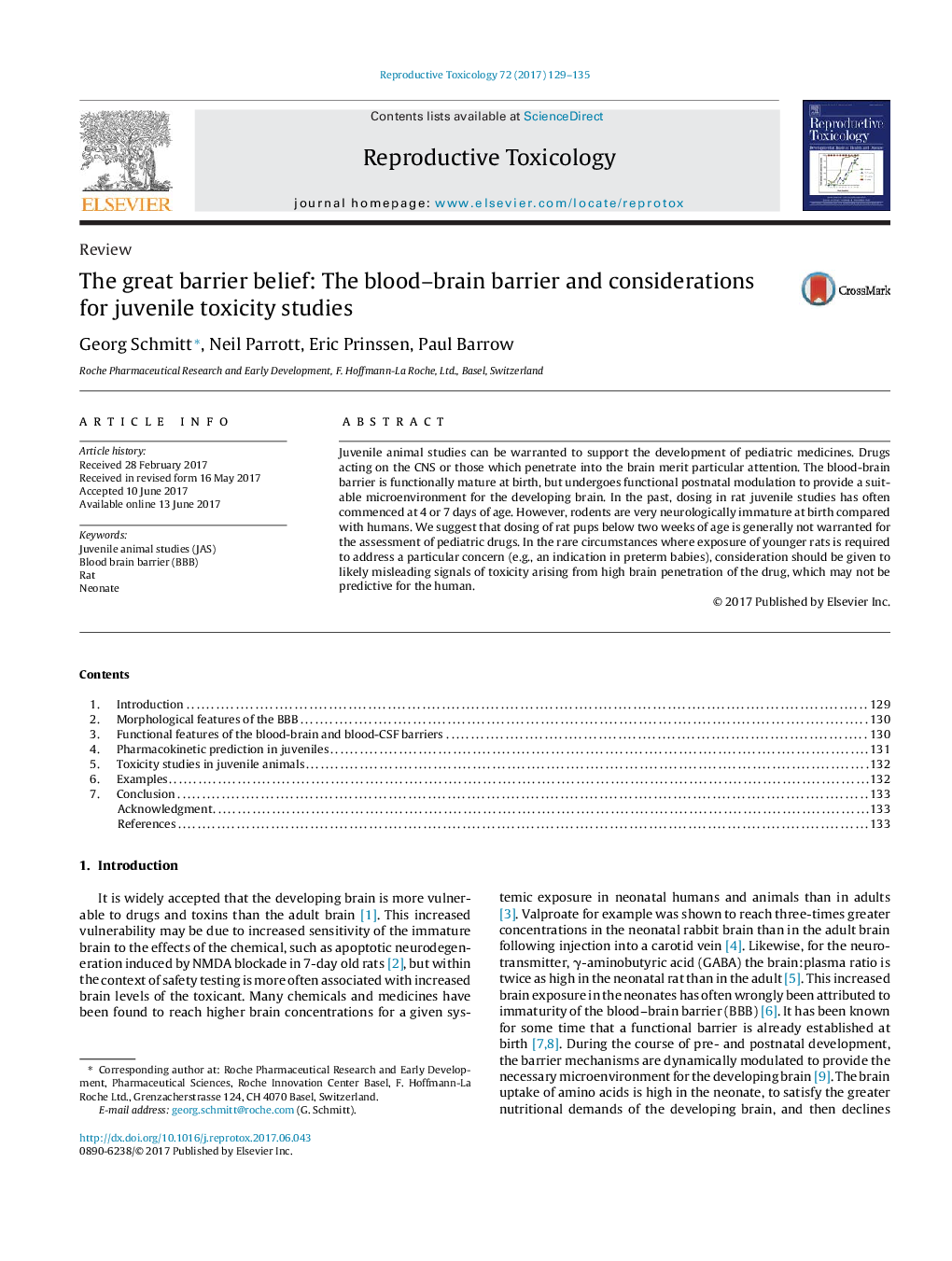| کد مقاله | کد نشریه | سال انتشار | مقاله انگلیسی | نسخه تمام متن |
|---|---|---|---|---|
| 5561548 | 1562147 | 2017 | 7 صفحه PDF | دانلود رایگان |
- High brain exposure can make neonates more vulnerable than adults to toxicity.
- The developmental modulation of the blood brain barrier is briefly reviewed.
- The neonatal rat has a very immature brain compared with the neonatal human.
- Safety studies in rat pups less than 2 weeks old may result in misleading toxicity signals.
Juvenile animal studies can be warranted to support the development of pediatric medicines. Drugs acting on the CNS or those which penetrate into the brain merit particular attention. The blood-brain barrier is functionally mature at birth, but undergoes functional postnatal modulation to provide a suitable microenvironment for the developing brain. In the past, dosing in rat juvenile studies has often commenced at 4 or 7Â days of age. However, rodents are very neurologically immature at birth compared with humans. We suggest that dosing of rat pups below two weeks of age is generally not warranted for the assessment of pediatric drugs. In the rare circumstances where exposure of younger rats is required to address a particular concern (e.g., an indication in preterm babies), consideration should be given to likely misleading signals of toxicity arising from high brain penetration of the drug, which may not be predictive for the human.
Journal: Reproductive Toxicology - Volume 72, September 2017, Pages 129-135
